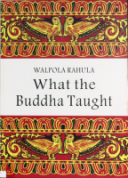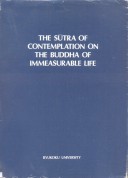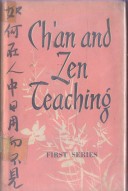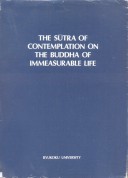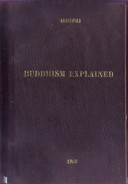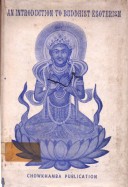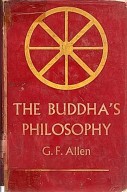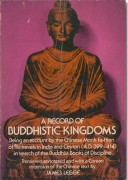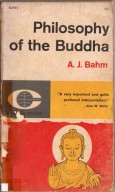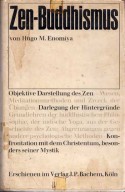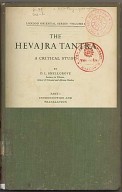MCB: 1210000007147
Page : 151 pages
Preface
All over the world today there is growing interest in Buddhism. Numerous societies and study-groups have come into being, and scores of books have appeared on the teaching of the Buddha. It is to be regretted, however, that most of them have been written by those who are not really competent, or who bring to their task misleading assumptions derived from other religions, which must misinterpret and misrepresent their subject. A professor of comparative religion who recently wrote a book on Buddhism did not even know that Ananda, the devoted attendant of the Buddha, was a bhikkbu (a monk), but thought he was a layman! The knowledge of Buddhism propagated by books like these can be left to the reader’s imagination.
I have tried in this little book to address myself first of all to the educated and intelligent general reader, uninstructed in the subject, who would like to know what the Buddha actually taught. For his benefit I have aimed at giving briefly, and as directly and simply as possible, a faithful and accurate account of the actual words used by the Buddha as they are to be found in the original Pali texts of the Tipitaka, universally accepted by scholars as the earliest extant records of the teachings of the Buddha. The material used and the passages quoted here are taken directly from these originals. In a few places I have referred to some later works too.
I have borne in mind, too, the reader who has already some knowledge of what the Buddha taught and would like to go further with his studies. I have therefore provided not only the Pali equivalents of most of the key-words, but also references to the original texts in footnotes, and a select bibliography.
The difficulties of my task have been manifold: throughout I have tried to steer a course between the unfamiliar and the popular, to give the English reader of the present day something which he could understand and appreciate, without sacrificing anything of the matter and the form of the discourses of the Buddha. Writing the book I have had the ancient texts running in my mind, so I have deliberately kept the synonyms and repetitions which were a part of the Buddha’s speech as it has come down to us through oral tradition, in order that the reader should have some notion of the form used by the Teacher. I have kept as close as I could to the originals, and have tried to make my translations easy and readable.
But there is a point beyond which it is difficult to take an idea without losing in the unerests of simplicity the particular meaning the Buddha was interested in developing. As the title ‘What the Buddha Taught’ was selected for this book, I felt that it would be wrong not to set down the words of the Buddha, even the figures he used, in preference to a rendering which might provide the easy gratification of comprehensibility at the risk of distortion of meaning.
I have discussed in this book almost everything which is commonly accepted as the essential and fundamental teaching of the Buddha. These are the doctrines of the Four Noble Truths, the Noble Eightfold Path, the Five Aggregates, Karma, Rebirth, Conditioned Genesis (Paticcasamuppada), the doctrine of No-Soul (Anatta), Satipatthana (the Setting-up of Mindfulness). Naturally there will be in the discussion expressions which must be unfamiliar to the Western reader. I would ask him, if he is interested, to take up on his first reading the opening chapter, and then go on to Chapters V, VII and VIII, returning to Chapters II, III, IV and VI when the general sense is clearer and more vivid. It would not be possible to write a book on the teaching of the Buddha without dealing with the subjects which Theravada and Mahayana Buddhism have accepted as fundamental in his system of thought.
The term Theravada—Himayana or ‘Small Vehicle’ is no longer used in informed circles—could be translated as ‘the School of the Elders’ (theras), and Mahayana as ‘Great Vehicle’. They are used of the two main forms of Buddhism known in the world today. Theravada, which is regarded as the original orthodox Buddhism, is followed in Ceylon, Burma, Thailand, Cambodia, Laos, and Chittagong in East Pakistan. Mahayana, which developed relatively later, is followed in other Buddhist countries like China, Japan, Tibet, Mongolia, etc. There are certain differences, mainly with regard to some beliefs, practices and observances between these two schools, but on the most important teachings of the Buddha, such as those discussed here, Theravada and Mahayana are unanimously agreed.
It only remains for me now to express my sense of gratitude to Professor E. F. C Ludowyk, who in fact invited me to write this book, for all the help given me, the interest taken in it, the suggestions he offered, and for reading through the manuscript. To Miss Marianne Möhn too, who went through the manuscript and made valuable suggestions, I am deeply grateful. Finally I am greatly beholden to Professor Paul Demiiville, my teacher in Paris, for his kindness in writing the Foreword.
W. Rahula
Paris
July 1958
Content
List of Illustrations … … … … … … … … … … vii
Foreword … … … … … … … … … … ix
Preface … … … … … … … … … … xi
The Buddha … … … … … … … … … … xv
CHAPTER I
The Buddhist Attitude of Mind
Man is supreme—One is one’s refuge—Responsibility—Doubt—Freedom of Thought—Tolerance—Is Buddhism Religion or Philosophy?—Truth has no label—No blind faith or belief, but seeing and understanding—No attachment even to Truth—Parable of the raft—Imaginary speculations useless—Practical attitude—Parable of the wounded man … 1
THE FOUR NOBLE TRUTHS
CHAPTER II
The First Noble Truth: Dukkha
Buddhism neither pessimistic nor optimistic, but realistic—Meaning of ‘Dukkha’—Three aspects of experience—Three aspects of ‘Dukkha’—What is a ‘being’?—Five Aggregates—No spirit opposed to matter—Flux—Thinker and Thought—Has life a beginning?… 16
CHAPTER III
The Second Noble Truth: Samuddya: ‘The Arising of Dukkha’—Definition—Four Nutriments—Root cause of suffering and continuity—Nature of arising and cessation—Karma and Rebirth— What is death?—What is rebirth? … … … … … … … … … … … … 29
CHAPTER IV
The Third Noble Truth: Nirodha: ‘The Cessation of Dukkha’— What is Nirvana?—Language and Absolute Truth—Definitions of Nirvana—Nirvana not negative—Nirvana as Absolute Truth— What is Absolute Truth?—Truth is not negative—Nirvana and Samsara—Nirvana not a result—What is there after Nirvana?— Incorrect expressions—What happens to an Arahant after death?— If no Self, who realizes Nirvana?—Nirvana in this life .. … … … … … … … … … … … 35
CHAPTER V
The Fourth Noble Truth: Magga: ‘The Path’
Middle Path or Noble Eightfold Path—Compassion and Wisdom—Ethical Conduct—Mental Discipline—Wisdom—Two sorts of Understanding—Four Functions regarding the Four Noble Truths … … … … … … 45
CHAPTER VI
The Doctrine of No-Soul: Anatta
What is Soul or Sefl—God and Soul: Self-protection and Self-preservation—Teaching ‘Against the Current’—Analytical and Synthetical methods—Conditional Genesis—Question of Free-will—Two kindt of Truths—Some erroneous views—The Buddha definitely denies ‘Atman’—The Buddha’s silence—The idea of Self a vague impression—Correct attitude—If no Self, who gets the result of Karma?—Doctrine of Anatta not negative … … … … … … … 51
CHAPTER VII
‘Meditation’ or Mental Culture: Bhavana
Erroneous views—Meditation is no escаре from life—Two forms of Meditation—The Setting-up of Mindfulness—’Meditation’ on breathing—Mindfulness of activities—Living in the present moment—’Meditation’ on Situations—on Mind—on Ethical, Spiritual and Intellectual subjects … … … … … … … … 67
CHAPTER VIII
What the Buddha Taught and the World Today
Erroneous views—Buddhism for all—ln daily life—Family and social life—Lay life held in high essteem—How to become a Buddhist— Social and economic problem—Poverty: came of crime—Material and spiritual progress—Four kinds of happiness for laymen—On politics, war and peace—Non-violence—The ten duties of a ruler—The Buddha’s Message—It it practical?—Asoka’s Example— The Aim of Buddhism … … 76
SELECTED TEXTS … … … 91
Setting in Motion the Wheel of Truth (Dhammacakkappavattana-sutta) … 92
The Fire Sermon (Adittapariyaya-sutta) … … .. 95
Universal Love (Metta-sutta) … … … 97
Blessings (Mangala-sutta) … … … … 98
Getting rid of All Caret and Troubles (Sabbasava-sutta) … … … … 99
The Parable of the Piece of Cloth ( Vatthupama-sutta) … … … 106
The Foundations of Mindfulness (Satipatthana-sutta) … … … … 109
Advice to Sigala (Sigalovada-sutta) … … … … … 119
The Words of Truth (Dhammapada) … … … … … … … 125
The Last Words of (he Buddha (from the Mabaparinibhana-sutta) .. 136
Abbreviations … … … … 139
Selected Bibliography … … … … … .. 140
Glossary … … … … … … 142
Index … … … … … .148
 Facebook
Facebook
 Google
Google
 Google+
Google+
